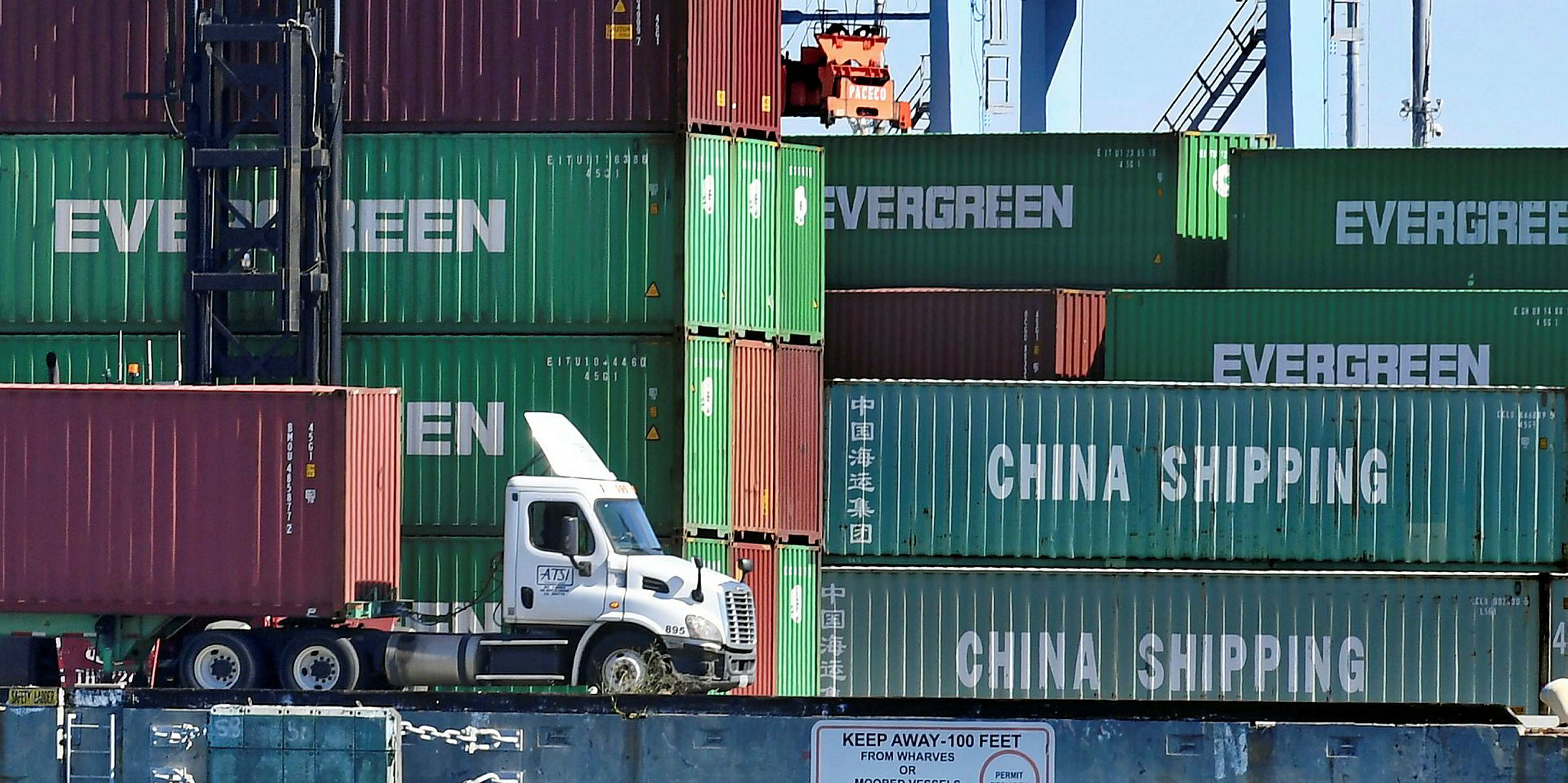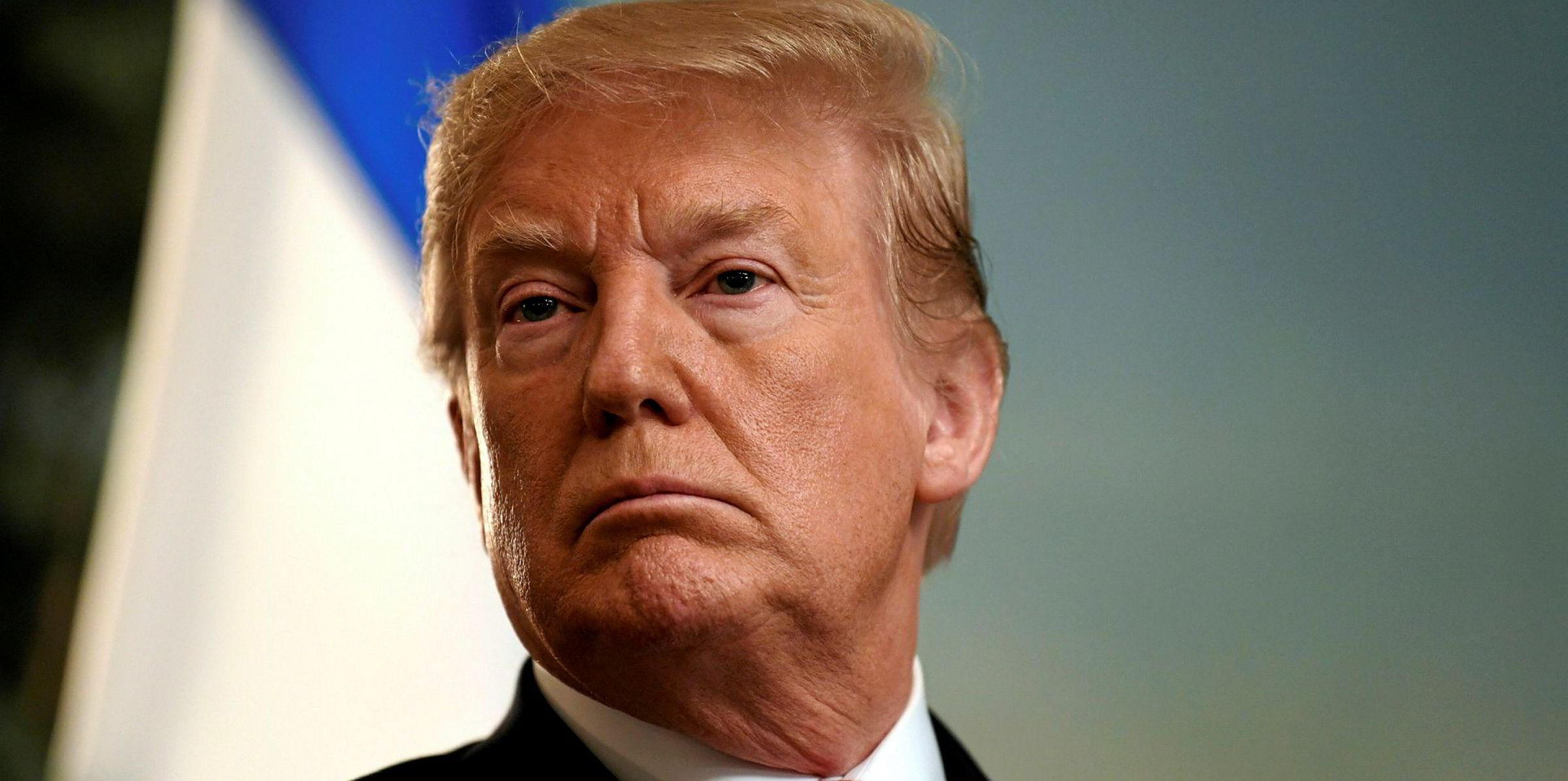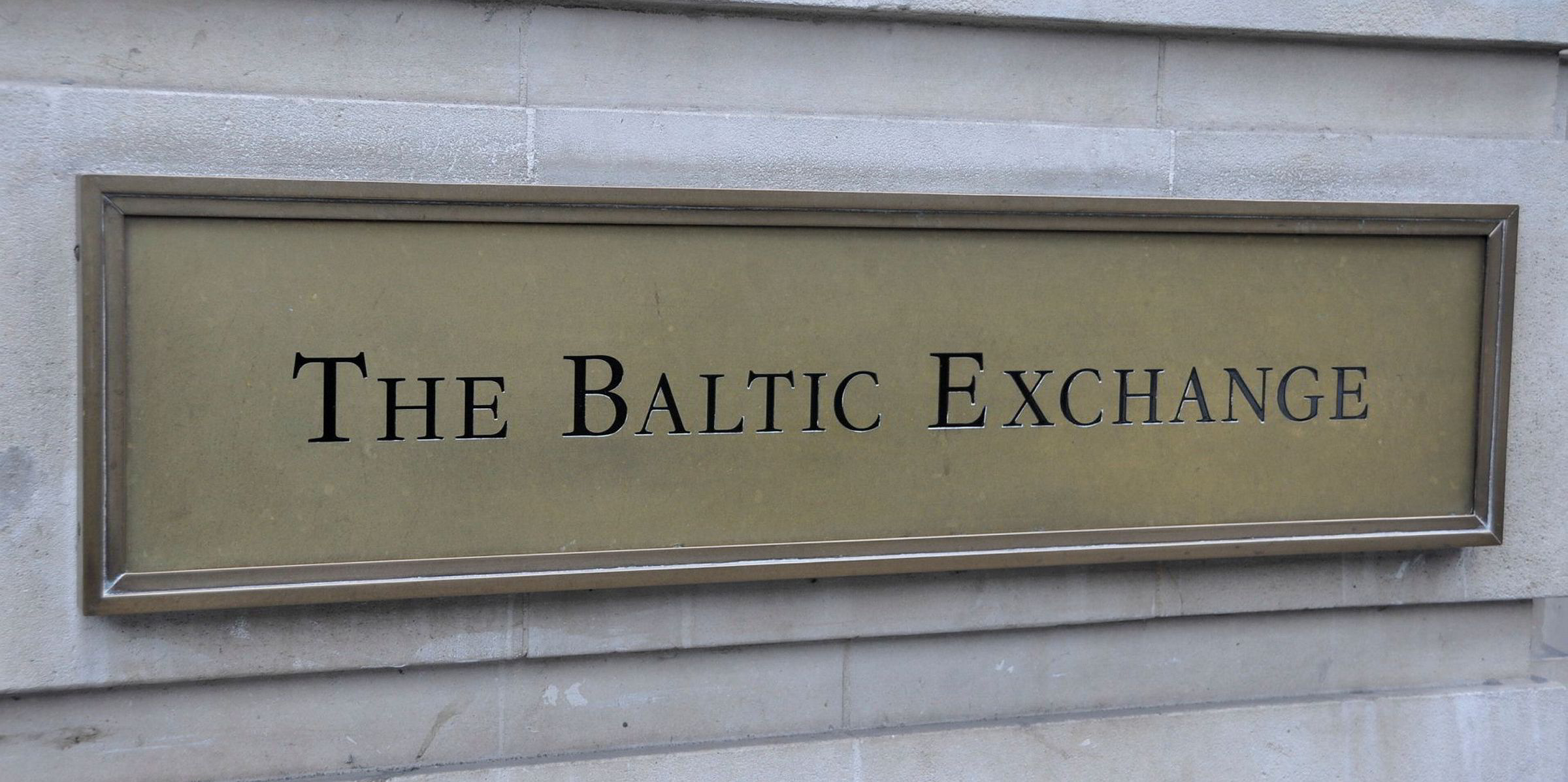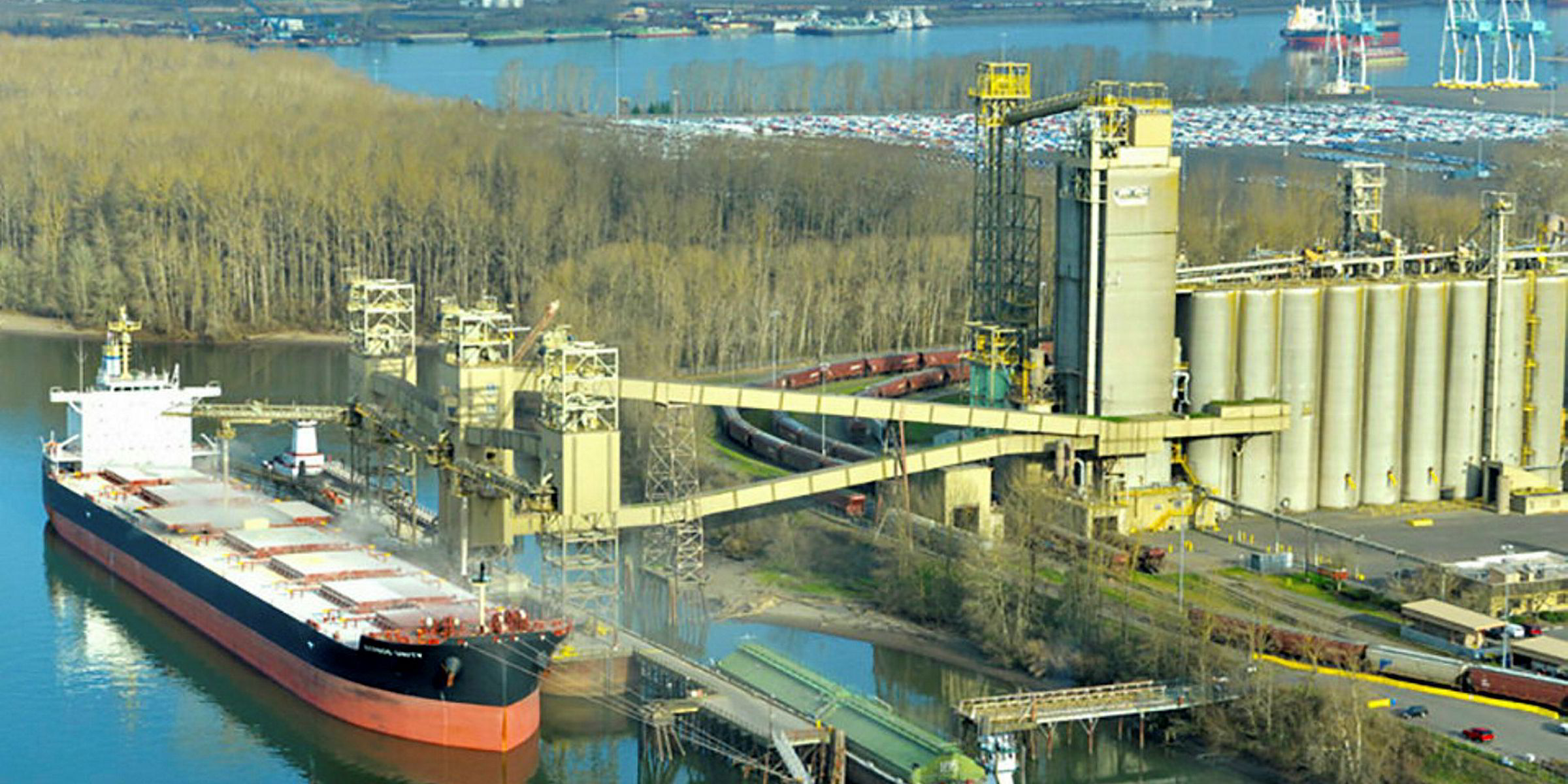Clarksons has cut its tonne-mile growth forecast for this year and has reiterated that dry bulk will be the sector hardest hit by tit-for-tat trade tariff increases by the US and China.
Aside from the so-called ‘trade war’ between the two superpowers, the risk of a global economic slowdown will also impact seaborne trade, Clarksons said in a new research report.
US ACTION
US introduces 10% import tariffs on $200bn of imports from China.
Status:
- In force from 24 September 2018
- RAISED to 25% on 10 May 2019.
CHINESE RESPONSE
China introduces 5-10% import tariffs on $60bn of annual imports from the US.
Status:
- In force from 24 September 2018
- RAISED to 5-25% effective 1 June 2019.
TRADE AFFECTED
Estimated total volume of 66 million tonnes, comprising
- 46 million tonnes containers;
- 15 million tonnes minor bulks,
- 2 million tonnes LNG,
- 2 million tonnes chemicals,
- 1 million tonnes oil products,
- 1 million tonnes iron ore.
Data: Clarksons.
The world’s largest shipbroker has downgraded its tonne-mile growth forecast for 2019 to 2.8%, from the previous projection of 3.4% it made at the start of this year.
Tariff levels have been increased from around 10% to 25% on 66 million tonnes of the world's 171 million tonnes of tariffed trade, Clarksons noted.
“We estimate that the direct impact of a continuation of this new tariff position through 2019 would reduce trade by -0.2% in tonnes and by -0.4% in tonne-miles (previous estimate -0.1% and -0.3%),” Clarksons said.
The picture, however, looks better for next year.
“Our 2020 trade growth projections remain positive at 3.9% in tonne-miles, in part driven by expected positive trends in oil and gas trades,” the shipbroker said.
Dry bulk impacts
Grain and steel products will be hardest hit by the latest escalation of trade tariffs by the US and China, Clarksons said.
The grain trade will this year suffer a -5.2% reduction in tonne-miles, due to a likely downturn in Chinese purchases of US grain and limited alternative destinations for the commodity, the research found.
Steel products will see a -0.7% contraction in tonne-mile transport, according to the broker, as US imports remain under pressure.
“While Chinese tariffs on imports of US soybeans have been set at 25% since July 2018, trade volumes in recent months have been healthier amid signs of thawing tensions,” Clarksons said in its report.
The US-China grain trade totalled 4.9 million tonnes in the first quarter last year, after totalling just 0.4 million tonnes in the final quarter of 2018 — but Clarksons said the outlook for the trade remains unclear as tensions escalate.
“There have been reports that Beijing could push state grain buyers to boycott US agricultural products,” the broker said.
Overall, the tariffs are expected to impact the total dry bulk trade by -0.7% in tonne-miles and by -0.3% in trade volume, but Clarksons said the Vale dam collapse will have a more negative impact on the sector.
Container contraction
The new tariffs will have a negative effect on the container trade this year, despite doing the opposite in 2018, Clarksons said.
The shipbroker expects tonne-mile transport by containerships to fall by -0.3% this year, slightly more than its previous projection of -0.2% but not as bad as its -1.5% ‘worst case’ scenario.
“Primarily, Transpacific volumes are expected to be most affected, though a knock-on effect on intra-Asian volumes is also likely,” Clarksons said.
Containerships saw a 0.1% boost to tonne-miles last year due to a ‘rush’ to ship cargoes from China ahead of the more stringent proposed tariffs in 2019, the research noted.
Other affected trades
Around 15 million tonnes per annum (tpa) of bilateral trade, comprising a variety of minor bulk commodities, has been affected by the latest escalation in tariffs, as well as some minor volumes of oil products, chemicals and iron ore, Clarksons said.
However, the broker does not expect the direct impact on trade volumes in these sectors across 2019 to be severe, as US-China bilateral trade in these commodities is “generally not highly significant”, it said.






